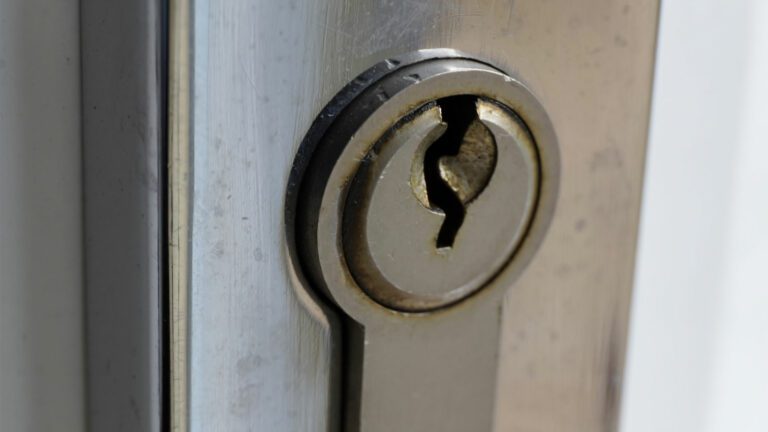
Security breaches in pharmacies have recently been reported on by ACP and the mainstream media. These reports should heighten awareness and concern by all pharmacy team members and invite a call to action to ensure that your pharmacy is secure.
The security of a pharmacy is defined by its infrastructure, systems, policies and procedures, and the behaviours of each member of the pharmacy team. Security is important to protecting drug inventory, especially controlled substances, and records maintained by the pharmacy.
The following security practices can help you and your team to conduct an audit of your pharmacy to determine its security.
- Dispensary security
- Have physical barriers for your dispensary, including lockable gates, that prevent access by unauthorized individuals both during and after operating hours.
- Have an electronic monitoring system to record who has accessed the dispensary or when (if) the dispensary has been accessed.
- Consider installing a video monitoring system that can recall footage of activities occurring in the dispensary.
- Note who has access to these recordings, the length of recordings, and how long they are retained.
- System access
- Protect your passwords and do not share bar-coded scan cards.
- Protect personal access codes to pharmacy information systems.
- Do not share your access codes with others, as activities that are logged under your code become your responsibility.
- Do not share access codes for ordering drug inventory, especially controlled substances, amongst pharmacy team members.
- Strictly prohibit unregulated individuals from ordering controlled substances on your behalf.
- Do not share codes for ordering drug inventory with unregulated individuals.
- Inventory procedures
- Where possible, ensure inventory is received and recorded by a different regulated member than the one who placed the order.
- Implement and maintain a perpetual inventory for narcotics.
- Conduct routine and random narcotic audits frequently and ensure that all identified discrepancies are investigated and resolved.
- After dispensing narcotics with a perceived high-diversion potential, back-count and verify the remaining pharmacy stock against the narcotic’s recorded perpetual inventory.
- Pharmacists performing the final check on narcotic prescriptions filled from logged or deferred prescriptions or filled as a part-fill are encouraged to consider the time elapsed since the prescription was logged or last filled. Most legitimate narcotic prescriptions are not kept on hold for extended periods, nor are intervals normally greatly exceeded between part-fills.
- Actively review on-hand pharmacy narcotic inventory needs and endeavour to keep smaller amounts of narcotics in stock. Maintaining smaller quantities on hand will allow for a more rapid identification of trends regarding increases in narcotics being received and/or being dispensed. In addition, more periodic narcotic orders resulting from lower on-hand stock levels will result in a greater opportunity for more staff members to be involved in narcotic security and therefore reduce the likelihood of any narcotic diversion by an individual.
- Question increases in receipted narcotic quantities. When increases are noted, these receipts should be verified against prescriptions and/or with patients and/or physician records to ensure that diversion is not occurring.
- Keep all clutter in the dispensary to a complete minimum. A disorganized dispensary creates an environment in which diversion is more likely to occur and remain undetected.
- Complete a full narcotic reconciliation on a regular basis, at least every three months. Investigate any discrepancies and report all losses to Health Canada.
- Ensure dispensary gates remain closed and do not allow unauthorized individuals into the dispensary at any time.
- Systems
- Ensure the pharmacy software can identify and track each user to avoid unauthorized modifications of narcotic inventory.
- Use pharmacy software that prevents unregulated pharmacy staff from modifying previously entered narcotic prescriptions or processing narcotic prescriptions independently without another regulated pharmacy staff member checking and overriding those transactions.
- Use prescription scanning technology. This technology will allow pharmacists and pharmacy technicians checking prescriptions filled from log or checking refills/part-fills the ability to readily review the original prescription to confirm currency, validity, and authenticity.
- Use inventory trending reports that can alert to changes in pharmacy narcotic ordering and receiving patterns.
Advice to pharmacists and pharmacy technicians
Get everyone in the pharmacy involved in the security of medications and pharmacy records. Ensure only individuals authorized by the licensee are allowed entrance to the dispensary. The fewer individuals in your dispensary the better. This will help minimize chaos and contribute to preventing diversion and errors.
Security of controlled substances, while ultimately the responsibility of the licensee, should be owned by the entire pharmacy team. The more staff involved in all aspects of narcotic security, the less likely that diversion will occur and the more likely that theft will be detected at the earliest opportunity.
Watch for unusual or unexplained trends in the pharmacy. Follow up on any perceived changes in narcotic ordering patterns, receipts, discrepancies, or anything that cannot be verified and accounted for. Implement consistently good patient care practices (e.g., having an ongoing dialogue with patients about their use of narcotics and reviewing patients’ medication profiles before checking and dispensing narcotic prescriptions).
Make security of controlled substances and pharmacy records an open and regular part of all pharmacy team meetings.
*NOTE: Since this article was published, ACP has developed a complete webpage regarding robberies and burglaries.




